- europages
- >
- COMPANIES - SUPPLIERS - SERVICE PROVIDERS
- >
- laser sintering
Results for
Laser sintering - Import export

ALPHA LASER GMBH
Germany
Design and geometry freedom withh high material yield. With its unique cartridge concept, the 3D metal printer AL3D-METAL offers safe powder management and quick powder change. The new system AL3D-METAL makes it easy to get started in additive manufacturing. The processor does not come into contact with the powder. Also ideal for schools and universities. The intelligent cartridge knows which powder it is filled with and provides the right process parameters. However, if the processor likes to experiment, he has full control over the parameters. Its floor print is only 60 x 60 cm
Request for a quote
3D-MICROMAC AG
Germany
The DMP machine solutions are designed for flexible series production of complex metal components using micro laser sintering. The DMP machine series is the perfect solution to achieve superior detail resolution, highest surface quality, unrivalled accuracy, and very high part density. It offers high flexibility, low operating costs and user friendliness. The system includes a zero point clamping system for easy post-processing at the highest accuracy level and inert gas atmosphere including gas purifying based on industry standards. The DMP systems are able to process non-reactive and reactive materials, e.g. stainless steel, molybdenum, tungsten, titanium, and gold. The Micro Laser Sintering technology has been developed and is continuously improved by 3D MicroPrint GmbH. Superior detail resolution Highest surface quality Unrivalled accuracy Very high part density
Request for a quote
RPWORLD
China
3D printing or additive manufacturing (AM) is any of various processes for making a three-dimensional object of almost any shapes. At RPWORLD, additive manufacturing 3D printing is designed for functional prototypes, complex designs, and production components. - Materials selection Selective laser sintering, (SLS), Stereolithography (SLA) and Fused Deposition Modeling (FDM) are the most common additives manufacturing processes that RPWORLD uses to realize a project. - Cost-efficiently You can get the 3D printed parts of any possible shapes as you desire. And more importantly, since it doesn’t need the mold, it could be a cost-effective process for your custom parts. - Complex-geometries The structure of the 3D printed parts is not limited, you can nearly get any shapes as your part design.
Request for a quote
RPWORLD
China
3D printing or additive manufacturing (AM) is any of various processes for making a three-dimensional object of almost any shapes. At RPWORLD, additive manufacturing 3D printing is designed for functional prototypes, complex designs, and production components. - Materials selection Selective laser sintering, (SLS), Stereolithography (SLA) and Fused Deposition Modeling (FDM) are the most common additives manufacturing processes that RPWORLD uses to realize a project. - Cost-efficiently You can get the 3D printed parts of any possible shapes as you desire. And more importantly, since it doesn’t need the mold, it could be a cost-effective process for your custom parts. - Complex-geometries The structure of the 3D printed parts is not limited, you can nearly get any shapes as your part design.
Request for a quote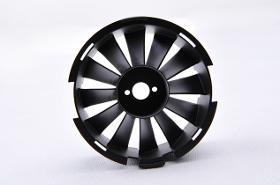
RPWORLD
China
3D printing or additive manufacturing (AM) is any of various processes for making a three-dimensional object of almost any shapes. At RPWORLD, additive manufacturing 3D printing is designed for functional prototypes, complex designs, and production components. - Materials selection Selective laser sintering, (SLS), Stereolithography (SLA) and Fused Deposition Modeling (FDM) are the most common additives manufacturing processes that RPWORLD uses to realize a project. - Cost-efficiently You can get the 3D printed parts of any possible shapes as you desire. And more importantly, since it doesn’t need the mold, it could be a cost-effective process for your custom parts. - Complex-geometries The structure of the 3D printed parts is not limited, you can nearly get any shapes as your part design.
Request for a quote
RPWORLD
China
3D printing or additive manufacturing (AM) is any of various processes for making a three-dimensional object of almost any shapes. At RPWORLD, additive manufacturing 3D printing is designed for functional prototypes, complex designs, and production components. - Materials selection Selective laser sintering, (SLS), Stereolithography (SLA) and Fused Deposition Modeling (FDM) are the most common additives manufacturing processes that RPWORLD uses to realize a project. - Cost-efficiently You can get the 3D printed parts of any possible shapes as you desire. And more importantly, since it doesn’t need the mold, it could be a cost-effective process for your custom parts. - Complex-geometries The structure of the 3D printed parts is not limited, you can nearly get any shapes as your part design.
Request for a quote
RPWORLD
China
3D printing or additive manufacturing (AM) is any of various processes for making a three-dimensional object of almost any shapes. At RPWORLD, additive manufacturing 3D printing is designed for functional prototypes, complex designs, and production components. - Materials selection Selective laser sintering, (SLS), Stereolithography (SLA) and Fused Deposition Modeling (FDM) are the most common additives manufacturing processes that RPWORLD uses to realize a project. - Cost-efficiently You can get the 3D printed parts of any possible shapes as you desire. And more importantly, since it doesn’t need the mold, it could be a cost-effective process for your custom parts. - Complex-geometries The structure of the 3D printed parts is not limited, you can nearly get any shapes as your part design.
Request for a quote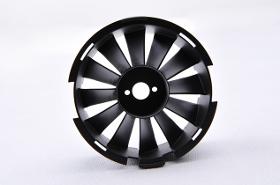
RPWORLD
China
3D printing or additive manufacturing (AM) is any of various processes for making a three-dimensional object of almost any shapes. At RPWORLD, additive manufacturing 3D printing is designed for functional prototypes, complex designs, and production components. - Materials selection Selective laser sintering, (SLS), Stereolithography (SLA) and Fused Deposition Modeling (FDM) are the most common additives manufacturing processes that RPWORLD uses to realize a project. - Cost-efficiently You can get the 3D printed parts of any possible shapes as you desire. And more importantly, since it doesn’t need the mold, it could be a cost-effective process for your custom parts. - Complex-geometries The structure of the 3D printed parts is not limited, you can nearly get any shapes as your part design.
Request for a quote
RPWORLD
China
3D printing or additive manufacturing (AM) is any of various processes for making a three-dimensional object of almost any shapes. At RPWORLD, additive manufacturing 3D printing is designed for functional prototypes, complex designs, and production components. - Materials selection Selective laser sintering, (SLS), Stereolithography (SLA) and Fused Deposition Modeling (FDM) are the most common additives manufacturing processes that RPWORLD uses to realize a project. - Cost-efficiently You can get the 3D printed parts of any possible shapes as you desire. And more importantly, since it doesn’t need the mold, it could be a cost-effective process for your custom parts. - Complex-geometries The structure of the 3D printed parts is not limited, you can nearly get any shapes as your part design.
Request for a quote
RPWORLD
China
3D printing or additive manufacturing (AM) is any of various processes for making a three-dimensional object of almost any shapes. At RPWORLD, additive manufacturing 3D printing is designed for functional prototypes, complex designs, and production components. - Materials selection Selective laser sintering, (SLS), Stereolithography (SLA) and Fused Deposition Modeling (FDM) are the most common additives manufacturing processes that RPWORLD uses to realize a project. - Cost-efficiently You can get the 3D printed parts of any possible shapes as you desire. And more importantly, since it doesn’t need the mold, it could be a cost-effective process for your custom parts. - Complex-geometries The structure of the 3D printed parts is not limited, you can nearly get any shapes as your part design.
Request for a quote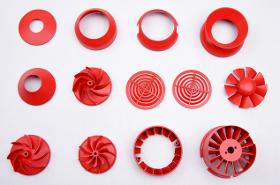
RPWORLD
China
3D printing or additive manufacturing (AM) is any of various processes for making a three-dimensional object of almost any shapes. At RPWORLD, additive manufacturing 3D printing is designed for functional prototypes, complex designs, and production components. - Materials selection Selective laser sintering, (SLS), Stereolithography (SLA) and Fused Deposition Modeling (FDM) are the most common additives manufacturing processes that RPWORLD uses to realize a project. - Cost-efficiently You can get the 3D printed parts of any possible shapes as you desire. And more importantly, since it doesn’t need the mold, it could be a cost-effective process for your custom parts. - Complex-geometries The structure of the 3D printed parts is not limited, you can nearly get any shapes as your part design.
Request for a quote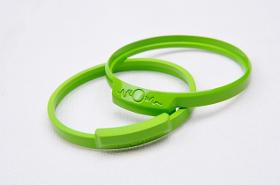
RPWORLD
China
3D printing or additive manufacturing (AM) is any of various processes for making a three-dimensional object of almost any shapes. At RPWORLD, additive manufacturing 3D printing is designed for functional prototypes, complex designs, and production components. - Materials selection Selective laser sintering, (SLS), Stereolithography (SLA) and Fused Deposition Modeling (FDM) are the most common additives manufacturing processes that RPWORLD uses to realize a project. - Cost-efficiently You can get the 3D printed parts of any possible shapes as you desire. And more importantly, since it doesn’t need the mold, it could be a cost-effective process for your custom parts. - Complex-geometries The structure of the 3D printed parts is not limited, you can nearly get any shapes as your part design.
Request for a quote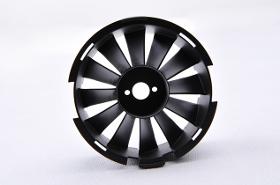
RPWORLD
China
3D printing or additive manufacturing (AM) is any of various processes for making a three-dimensional object of almost any shapes. At RPWORLD, additive manufacturing 3D printing is designed for functional prototypes, complex designs, and production components. - Materials selection Selective laser sintering, (SLS), Stereolithography (SLA) and Fused Deposition Modeling (FDM) are the most common additives manufacturing processes that RPWORLD uses to realize a project. - Cost-efficiently You can get the 3D printed parts of any possible shapes as you desire. And more importantly, since it doesn’t need the mold, it could be a cost-effective process for your custom parts. - Complex-geometries The structure of the 3D printed parts is not limited, you can nearly get any shapes as your part design.
Request for a quote
RPWORLD
China
3D printing or additive manufacturing (AM) is any of various processes for making a three-dimensional object of almost any shapes. At RPWORLD, additive manufacturing 3D printing is designed for functional prototypes, complex designs, and production components. - Materials selection Selective laser sintering, (SLS), Stereolithography (SLA) and Fused Deposition Modeling (FDM) are the most common additives manufacturing processes that RPWORLD uses to realize a project. - Cost-efficiently You can get the 3D printed parts of any possible shapes as you desire. And more importantly, since it doesn’t need the mold, it could be a cost-effective process for your custom parts. - Complex-geometries The structure of the 3D printed parts is not limited, you can nearly get any shapes as your part design.
Request for a quote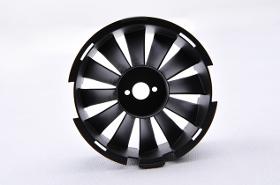
RPWORLD
China
3D printing or additive manufacturing (AM) is any of various processes for making a three-dimensional object of almost any shapes. At RPWORLD, additive manufacturing 3D printing is designed for functional prototypes, complex designs, and production components. - Materials selection Selective laser sintering, (SLS), Stereolithography (SLA) and Fused Deposition Modeling (FDM) are the most common additives manufacturing processes that RPWORLD uses to realize a project. - Cost-efficiently You can get the 3D printed parts of any possible shapes as you desire. And more importantly, since it doesn’t need the mold, it could be a cost-effective process for your custom parts. - Complex-geometries The structure of the 3D printed parts is not limited, you can nearly get any shapes as your part design.
Request for a quote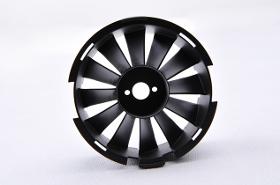
RPWORLD
China
3D printing or additive manufacturing (AM) is any of various processes for making a three-dimensional object of almost any shapes. At RPWORLD, additive manufacturing 3D printing is designed for functional prototypes, complex designs, and production components. - Materials selection Selective laser sintering, (SLS), Stereolithography (SLA) and Fused Deposition Modeling (FDM) are the most common additives manufacturing processes that RPWORLD uses to realize a project. - Cost-efficiently You can get the 3D printed parts of any possible shapes as you desire. And more importantly, since it doesn’t need the mold, it could be a cost-effective process for your custom parts. - Complex-geometries The structure of the 3D printed parts is not limited, you can nearly get any shapes as your part design.
Request for a quote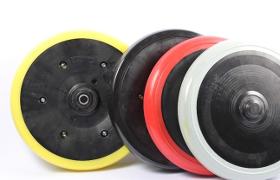
INTERNORM KUNSTSTOFFTECHNIK GMBH
Germany
We accompany you with our design and development from the idea to series production! We process all common thermoplastics for you. Besides polyurethane, these are mainly: PE (polyethylene), PA (polyamide), PP (polypropylene), POM, ASA, TPU, PP, TPE as well as glass fiber reinforced plastics. Advantages of the injection molding process are low unit costs with high batch sizes. Before an injection mold is ordered, we build view samples for you as laser-sintered elements or by means of 3D printing. In this way, the desired part can already be viewed without having to spend a lot of money. Our machines inject molded parts from 5 to 6000 grams.
Request for a quoteDo you sell or make similar products?
Sign up to europages and have your products listed

RPWORLD
China
3D printing or additive manufacturing (AM) is any of various processes for making a three-dimensional object of almost any shapes. At RPWORLD, additive manufacturing 3D printing is designed for functional prototypes, complex designs, and production components. - Materials selection Selective laser sintering, (SLS), Stereolithography (SLA) and Fused Deposition Modeling (FDM) are the most common additives manufacturing processes that RPWORLD uses to realize a project. - Cost-efficiently You can get the 3D printed parts of any possible shapes as you desire. And more importantly, since it doesn’t need the mold, it could be a cost-effective process for your custom parts. - Complex-geometries The structure of the 3D printed parts is not limited, you can nearly get any shapes as your part design.
Request for a quote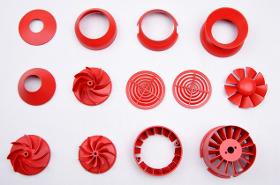
RPWORLD
China
3D printing or additive manufacturing (AM) is any of various processes for making a three-dimensional object of almost any shapes. At RPWORLD, additive manufacturing 3D printing is designed for functional prototypes, complex designs, and production components. - Materials selection Selective laser sintering, (SLS), Stereolithography (SLA) and Fused Deposition Modeling (FDM) are the most common additives manufacturing processes that RPWORLD uses to realize a project. - Cost-efficiently You can get the 3D printed parts of any possible shapes as you desire. And more importantly, since it doesn’t need the mold, it could be a cost-effective process for your custom parts. - Complex-geometries The structure of the 3D printed parts is not limited, you can nearly get any shapes as your part design.
Request for a quote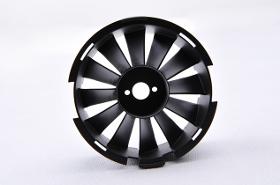
RPWORLD
China
3D printing or additive manufacturing (AM) is any of various processes for making a three-dimensional object of almost any shapes. At RPWORLD, additive manufacturing 3D printing is designed for functional prototypes, complex designs, and production components. - Materials selection Selective laser sintering, (SLS), Stereolithography (SLA) and Fused Deposition Modeling (FDM) are the most common additives manufacturing processes that RPWORLD uses to realize a project. - Cost-efficiently You can get the 3D printed parts of any possible shapes as you desire. And more importantly, since it doesn’t need the mold, it could be a cost-effective process for your custom parts. - Complex-geometries The structure of the 3D printed parts is not limited, you can nearly get any shapes as your part design.
Request for a quote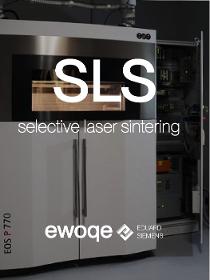
EWOQE GMBH & CO. KG
Germany
Additive Manufacturing / 3D Printing using the SLS process with a build volume of up to 700x380x580 mm. Additive Manufacturing / 3D Printing not only offers unparalleled variety of shapes and design freedom but also additional features such as mass customization or lightweight construction. Take advantage of the benefits of this innovative technology to stand out from the competition and manufacture more efficiently than ever before. We accompany you at every stage of the process! Personal consultation is extremely important to us so that you can understand and optimize the benefits of the technologies. Contact us. info@ewoqe.com
Request for a quote
XIAMEN INNOVACERA ADVANCED MATERIALS CO., LTD
China
BAB299, BAB350, BAB492, BAB496, and BAB497 Ceramic Reflectors are Single Lamp & Single Rod, the external shapes are Elliptic. Ceramic Reflector is made of high purity porous alumina ceramic of 99% Al2O3 content, used extensively for long-life laser reflectors. This material is sintered at high temperatures to achieve a controlled porosity. Ceramic reflectors work particularly well in Ruby and Nd:YAG laser pumping chambers and can be a highly cost-effective alternative to metal-coated reflectors. They are also used extensively as reflectors in housings for high-intensity lamps. – Resist chemical attack – high strength – high reflectivity over a broad wavelength band – good thermal conductivity and electrical stability
Request for a quote
XIAMEN INNOVACERA ADVANCED MATERIALS CO., LTD
China
BAB192 (TCT97, BAB349), BAB275, BAB330 Ceramic Reflectors are Single Lamp & Single Rod, the external shapes are Round. Ceramic Reflector is made of high purity porous alumina ceramic of 99% Al2O3 content, used extensively for long-life laser reflectors. This material is sintered at high temperatures to achieve a controlled porosity. INNOVACRA supplies ceramic reflectors for Lamp-pumped Solid-state Lasers, Diode-pumped Solid-state Lasers, and Beauty and IPL Applications. Here is our catalog for your reference. If you’re interested, please don’t hesitate to contact us for drawings and quotations.
Request for a quote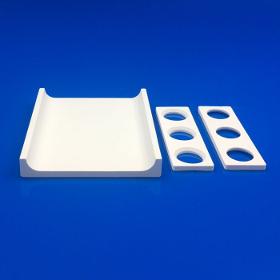
XIAMEN INNOVACERA ADVANCED MATERIALS CO., LTD
China
Alumina Ceramic Cavity Laser Reflectors Introductions : High purity porous alumina ceramic of 99% Al2O3 content, used extensively for long-life laser reflectors. This material is sintered at high temperatures to achieve a controlled porosity. Ceramic Reflector Prime Features: > Surfaces can be sealed and coated with a solarization-resistant glaze to give high bulk refectivity > 97% reflectance efficiency at 600-1000nm > Reflectance efficiency exceeds 95% across the wavelength range 400-1200nm (see curve) > Controlled porosity > Good thermal conductivity > High electrical resistivity Ceramic Cavity Laser Reflectors Physical properties: > Color: White > Bulk density (fired), Mg/m3 :3.1 > Porosity (apparent), % nominal :22 > Flexural strength (ASTM C1161, 3-point), MPa :170 > Thermal expansion coefficient 200-500C, 10-6 /C 7.9 200-1000C, 10-6 /C 9.0
Request for a quote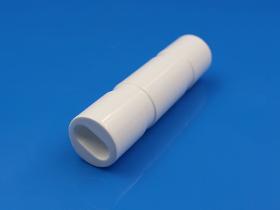
XIAMEN INNOVACERA ADVANCED MATERIALS CO., LTD
China
Innovacera manufactures custom and standard ceramic reflector designs for flash lamps, continuous-wave lasers, diode-pumped lasers, and cosmetic surgery markets. Ceramic Reflector is made by high purity porous alumina ceramic of 99% Al2O3 content, used extensively for long-life laser reflectors. This material is sintered at high temperatures to achieve a controlled porosity.
Request for a quote
3D PROTOTIPAI
Lithuania
For metal printing we are using special technology - Direct Metal Laser Sintering. DMLS is an additive process, when laser melts fine metal powder and builds up the product layer by layer. This method is perfect solution for direct, cost-efficient manufacturing of high-quality metal tool inserts, prototypes and end-use products. DMLS is used when strenght and funcionality of the product is very important. Technology allows tocreate products with extremely complex geometries including elements such as free-form surfaces, deep slots and coolant ducts. DMLS technology is widely used in healthcare, automotive and aviation industries. Choosing different materials produces products with different characteristics such as flexibility, rigidity and durability.
Request for a quote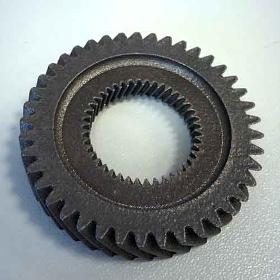
3D PROTOTIPAI
Lithuania
For metal printing we are using special technology - Direct Metal Laser Sintering. DMLS is an additive process, when laser melts fine metal powder and builds up the product layer by layer. This method is perfect solution for direct, cost-efficient manufacturing of high-quality metal tool inserts, prototypes and end-use products. DMLS is used when strenght and funcionality of the product is very important. Technology allows tocreate products with extremely complex geometries including elements such as free-form surfaces, deep slots and coolant ducts. DMLS technology is widely used in healthcare, automotive and aviation industries. Choosing different materials produces products with different characteristics such as flexibility, rigidity and durability.
Request for a quote
3D PROTOTIPAI
Lithuania
For metal printing we are using special technology - Direct Metal Laser Sintering. DMLS is an additive process, when laser melts fine metal powder and builds up the product layer by layer. This method is perfect solution for direct, cost-efficient manufacturing of high-quality metal tool inserts, prototypes and end-use products. DMLS is used when strenght and funcionality of the product is very important. Technology allows tocreate products with extremely complex geometries including elements such as free-form surfaces, deep slots and coolant ducts. DMLS technology is widely used in healthcare, automotive and aviation industries. Choosing different materials produces products with different characteristics such as flexibility, rigidity and durability.
Request for a quote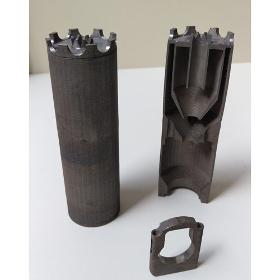
3D PROTOTIPAI
Lithuania
For metal printing we are using special technology - Direct Metal Laser Sintering. DMLS is an additive process, when laser melts fine metal powder and builds up the product layer by layer. This method is perfect solution for direct, cost-efficient manufacturing of high-quality metal tool inserts, prototypes and end-use products. DMLS is used when strenght and funcionality of the product is very important. Technology allows tocreate products with extremely complex geometries including elements such as free-form surfaces, deep slots and coolant ducts. DMLS technology is widely used in healthcare, automotive and aviation industries. Choosing different materials produces products with different characteristics such as flexibility, rigidity and durability.
Request for a quoteResults for
Laser sintering - Import exportNumber of results
33 ProductsCompany type
Category
- 3D printers (17)
- Ceramics, industrial (2)
- Ceramics, refractory (2)
- Laser - cutting and welding machines (2)
- CAD/CAM Computer Assisted Design/Computer Assisted Manufacturing - software (1)
- Optical measuring equipment (1)
- Plastics moulding (1)
- Printing - supplies (1)
- Prototypes, industrial (1)
- Surface treatment - machinery and equipment (1)